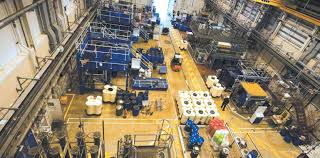Sellafield is probably the UK’s best known nuclear site. It should come as no surprise, then, that UKNNL has very close links with the site. When the site team started talking to us about the development of a new waste treatment plant for direct encapsulation to treat uranium metal we wanted to help.
The proposed new development would take uranium, much of which had corroded, mix it with cement and pour it into new containers for safe, long term storage. Uranium metal produces uranium oxide and uranium hydride as it corrodes, both of which are highly pyrophoric, causing a significant risk of spontaneous combustion. These oxides and hydrides were already present in the waste as it went through the plant.

Before spending up to £1 billion on the development of a new waste treatment plant, Sellafield Ltd commissioned UKNNL to carry out the fundamental science to help understand the size of the problem and whether additional safety measures would be needed. We carried out a substantial body of research work over a period of several years using oxygen free glove boxes at our Preston site. We studied the fundamental behaviour of the material under different conditions to see how it behaved and reacted.
Our research found that previously held views about the reactivity of corroding uranium metal were overly pessimistic, and that uranium metal could, in fact, be processed at an existing Sellafield facility without the need for mixing.
Carrying out this research work not only saved Sellafield time and vast sums of money, but it advanced the world’s knowledge of the material for the benefit of the entire scientific community.
